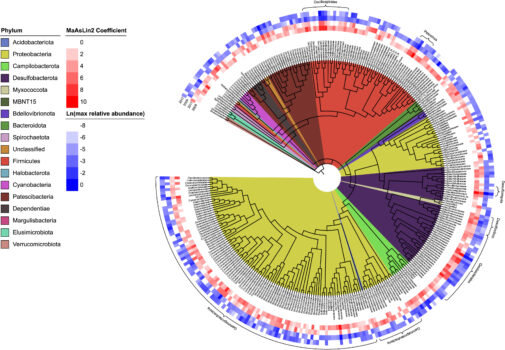Emulsified vegetable oil injections into groundwater promoted reproducible geochemical and microbial changes across an eight-year time gap.
The Science
Adding carbon to groundwater can encourage microorganisms to process uranium into a less volatile state, making it a promising strategy for remediating contaminated environments. However, this practice and its potential side effects had not been thoroughly evaluated. Moreover, understanding how microbial communities form in response to stimuli is a fundamental question in microbial ecology. Whether and how communities may respond similarly to the same stimulus remains an open question. In the case of carbon amendments designed to remediate environmental contamination, this question impacts how the amendments are planned and executed; ideally, injections would result in consistent changes in microbial communities and the surrounding environment. Here, ENIGMA researchers studied the response of microbial communities to repeated injections of the same type of nutrient. Emulsified vegetable oil was injected into contaminated groundwater twice, with eight years between injections. Researchers then monitored the responses of important molecules and microbial communities to understand the impact of those injections.

The Impact
This study investigates the impacts of groundwater injections on both microbial communities and the nearby non-living geochemical environment. Furthermore, the work expands the current understanding of how consistently microbial communities respond to environmental changes. While this has been the subject of numerous investigations in the lab, field-scale studies are rarely performed due to their complexity and logistical constraints. Here, ENIGMA researchers demonstrate that much of what has been previously shown in the lab holds true in a real-world setting.
Summary
Researchers identified comparable geochemical changes following both injections driven by microbial activity. Both injections induced a response in certain microbial species, specifically those implicated in reducing the level of uranium, nitrate, and sulfate in the groundwater. Additionally, though microbial community structures were different before each injection, they followed the same trend following the injections. Microbial community assembly mechanisms following the injections were also highly similar between years, and in particular they followed the same trend while the nutrients in the injection were being consumed.
Contact

Jonathan Michael
University of Oklahoma
Jonathan.p.michael@ou.edu

Jizhong Zhou, George Lynn Cross Research Professor; Director, Institute for Environmental Genomics (IEG)
Department of Microbiology & Plant Biology, University of Oklahoma
jzhou@ou.edu
Funding
This study by ENIGMA- Ecosystems and Networks Integrated with Genes and Molecular Assemblies (http://enigma.lbl.gov), a Science Focus Area Program at Lawrence Berkeley National Laboratory is based upon work supported by the U.S. Department of Energy, Office of Science, Office of Biological & Environmental Research under contract number DE-AC02-05CH11231.
Publications
Michael J.P.; A.D. Putt, Y. Yang, B.G. Adams, K.R. McBride, Y. Fan, K.A. Lowe, D. Ning, S. Jagadamma, J.W. Moon, D.M. Klingeman, P. Zhang, Y. Fu, T.C. Hazen, J. Zhou. “Reproducible responses of geochemical and microbial successional patterns in the subsurface to carbon source amendment.” Water Research 255 (2024). https://doi.org/10.1016/j.watres.2024.121460. OSTI: 2326252
